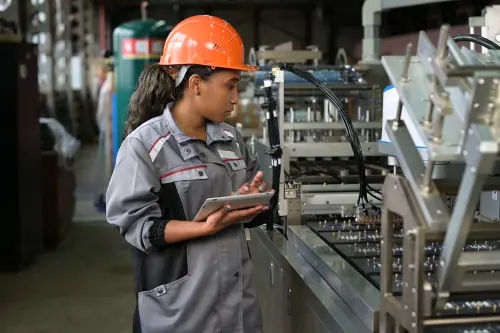“‘Making it’ in Newark: the Future of Manufacturing” was originally published in The Star-Ledger of Newark, N.J.
The popularity of the Discovery Channel’s “How It’s Made” reflects America’s longstanding fascination with cutting-edge processes, state-of-the-art machines, and the shiny, new objects they together produce. It’s not for nothing that, despite years of off-shoring and outsourcing, the United States remains the world’s largest maker and biggest consumer of manufactured goods.
What’s more, global conditions are becoming increasingly favorable for domestic production: Shorter lead times, more predictable delivery conditions, more integrated technologies and consistent product quality are conferring ever-important advantages for U.S. firms.
Nevertheless, for decades Americans have held an incongruous belief that U.S. manufacturing is dying or dead, and that the nation’s manufacturing jobs largely involve rote assembly-line work in dirty, unsafe factories.
This problematic disconnect between perception and reality is readily apparent in Newark.
From its position as an early innovator in iron fabrication to its famed association with Thomas Edison, Newark lays claim to a strong industrial legacy. But in recent years, trends regarding the structure, scale and value of manufacturing in the area have been neither well-documented nor well-understood. As a result, misconceptions about the Newark’s manufacturing sector persist, resulting in lost opportunities for firms as well as potential workers.
To be sure, Newark’s manufacturing sector — like the nation’s — has changed dramatically in recent decades. Today, most of Newark’s 400 manufacturers are small businesses that compete under very different constraints than they and their predecessors did just a generation ago. Some have retooled to meet new and evolving market opportunities, while others struggle to adopt innovative processes, optimize their supply chains or overcome workforce and land-use challenges.
From bakeries to apparel makers, printers to custom-part fabricators, Newark manufacturers employ 10,000 workers, or about 8 percent of all local jobs. Together, these firms compose a small but promising sector that stands at an important crossroads.
A recent report by the Brookings Institution sheds new light on the issue and provides a set of guideposts for improving firms’ long-term success.
The report argues that Newark has a chance to seize upon the national “manufacturing moment” by taking better advantage of the great density and diversity of people, firms, infrastructure assets and resources in the city and broader region. To do so, however, local and regional stakeholders — including government, educational institutions, nonprofits and networks of manufacturing firms — must focus collectively on reaching a few realistic goals.
First, they need to identify high-impact resources that will help small and midsize manufacturers improve productivity, broaden market reach, up-skill local talent and deepen innovative capacity. Local and regional partners across sectors must collaborate to promote resource efficiency and sustainable supply chains, while linking firms to resources that can help them better understand, and connect to, new market opportunities.
They must coordinate efforts to grow — through education, credentialing and internships — a reliable pipeline of skilled production workers that can successfully replace the sector’s aging workforce. And they must align and set agendas that will ensure Newark’s land and infrastructure are of the scale and quality needed to attract new firms and expand existing ones.
These steps will ultimately boost Newark’s industrial performance and value — something that cannot be accomplished through “race to the bottom” tactics or strategies that rely on short-term gains.
Newark manufacturing can play a key role in supporting a regional transition to a more resilient “next economy” — one driven by the creation of quality jobs in innovative, clean and globally connected industries.
To this end, the framework and recommendations presented by Brookings will hopefully serve to advance dialogue about the sector — why it matters, who will lead key efforts, what resources can be allocated and, ultimately, how the health of Newark’s manufacturing sector will be defined and measured in the years to come.
The Brookings Institution is committed to quality, independence, and impact.
We are supported by a diverse array of funders. In line with our values and policies, each Brookings publication represents the sole views of its author(s).



Commentary
Op-ed‘Making it’ in Newark: the Future of Manufacturing
September 6, 2013